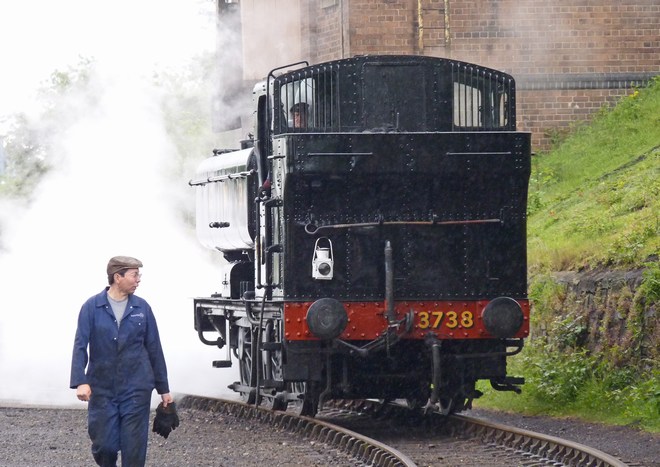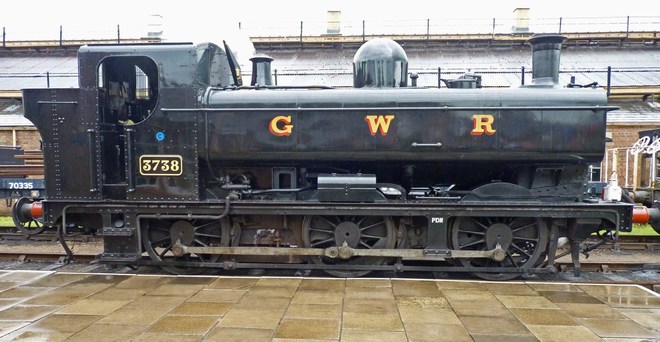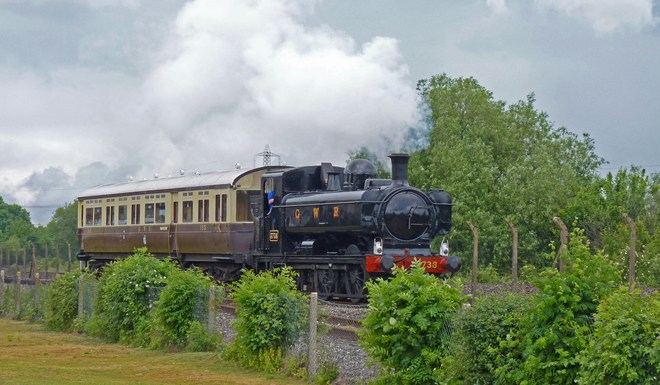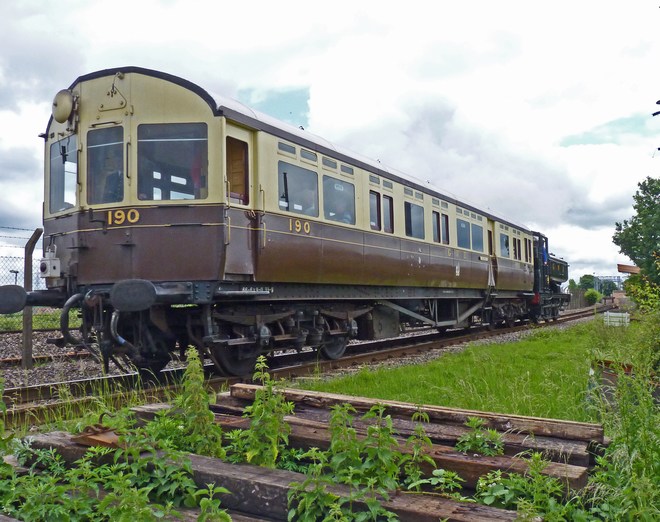| My Photographs | Back to Home Page |
|
|
DIDCOT RAILWAY CENTRE 2010 |
|
This railway centre is on the site of the old Didcot sidings and engine sheds. The Great Western Railway opened its first line from London to Bristol via Didcot in 1841. Didcot was a tiny village then, but the GWR built a junction to Oxford and Birmingham at Didcot which gave Didcot much business and imprortance. The engine sheds at Didcot date from 1857, but a completely new depot was constructed there in 1932. With the demise of steam in 1965, the sheds at Didcot lost their need to exist, and were closed down in 1969. The station at Didcot remains open, and continues to be a busy and important junction. Meanwhile, the Great Western Sociey had formed in 1964 with the aim of preserving as many GWR locomotives and as much rolling stock as possible. The society had purchased three locomotives and some carriages which they moved into the redundant engine shed at Didcot in 1967. Since then it has evolved into the Didcot Railway Centre, with many working steam and diesel locos, two standard gauge demonstration lines, and even a reconstructed broad gauge line with a replica broad gauge locomotive. There are now three stations on the demo lines, with ex-GWR signal boxes, along with many other railway artifacts which have been installed at the centre. The following photographs were taken on Tuesday 8th June 2010. |
Locos lined up outside the engine shed. The three identifiable
ones are:
1338 0-4-0 ST, built by Kitson & Co of Leeds in 1898. It is the
only surviving locomotive of the Cardiff Railway Company.
1340 "Trojan" 0-4-0 ST, built by Avonside Engine Company in
1897, formerly with Alexandra Docks & Railway Company.
5029 "Nunney Castle" of the GWR Castle Class, 4-6-0 built at Swindon
in 1934. It is frequently used on
mainline steam specials, and more details are available at: http://www.5029nunneycastle.co.uk/
Close up of 1338 with 1340 behind.
Again this is 1338 0-4-0 ST of 1898 looking in great shape.
This black & white shot of the engine shed shows how it
may have looked in times gone by.
However, it probably looks a lot cleaner now than it did in the 1950s.
Another black and white photo, this time of wagons with the side of the engine shed as a backdrop.
3738 0-6-0 PT is off to the coaling stage to get ready for some runs on the main demonstration line.
The coal hopper is pushed out ready to unload into the loco's bunker.
And the coal is discharged...
... straight into the bunker.

Full of coal, 3738 runs back to the waiting area.

3738 was built by GWR at Swindon in 1937. She went into preservation in 1974.
Didcot Halt is on the short "branch line".
The parts all came from former GWR stations.
The "pagoda" style shelter is made of corrugated iron sheets, and
was used extensively
on rural stations throughout the GWR network. Didcot Halt was
opened at the centre in 1981.
Just along from Didcot Halt is this re-creation of a typical
level crossing complex
with signal box (from Radstock), 1950s-style road sign and other
artifacts.
Close up of various signs and the water tower, from Bodmin.
Another transplanted signal box.
General View of the carriage and wagon shed.
In the carriage shed is this No 22 GWR Diesel Passenger
Railcar.
It was built by Associated Equipment (chassis) and BR Swindon (body) in 1949.
Withdrawn in 1962, it was acquired by the Great Western Society in 1967 and put
into use the following year.
This is the "Fire Fly", a broad gauge replica built
at Didcot in 2005.
It is used on special gala days at the centre. The original Fire Fly had
been built in 1840.
This view shows the mixed gauge track which can be used by the
broad gauge loco
as well as standard gauge rolling stock.
Oxford Road station is at the north end of the main demonstration line.
By the visitors' area of restaurant, shop and museum, is this original GWR bench.

Later in the day, 3738 was working the main demonstration line with an Auto Trailer.

Auto Trailer 190 was built by Collett in 1933.
3738 and Auto Trailer on another trip along the demonstration line.
3738 again, this time at the platform at the opposite end of
the line from Oxford Road station.
This station, opposite the entrance to the centre, does not seem to have been
given a name.
The main demonstration line is about ½ mile in length.
| My Photographs | Back to Home Page |
© Copyright M J Smith, 2010
No photographs to be reproduced elsewhere without permission.